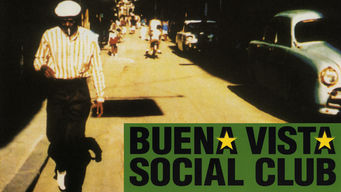
A landmark album from the extraordinary group of Cuban musicians dedicated to bringing back the music of pre-revolutionary Cuba. WorldCircuit Ry Cooder originally intended to record Malian musicians and Cuban locals, but the Africans were unable to obtain visas, so he made an album of Cuban son instead.Tom Johnston from The Doobie Brothers Songwriter Interviews. The Doobies guitarist and lead singer, Tom wrote the classics 'Listen To The Music,' 'Long Train Runnin'' and 'China Grove.' Kevin Godley talks about directing classic videos for The Police, U2 and Duran Duran, and discusses song and videos he made with 10cc and Godley & Creme.∙ The original Buenavista Social Club was an actual place—a ’40s-era members-only club in Havana, exclusively for Afro-Cubans.Column by James Lien Section coordinated by Tad Hendrickson new world news Buena Vista Social Club The 16-city Orquestra Ibrahim Ferrer Y Ruben Gonzalez.

The "Buena Vista Social Club" name became an umbrella term to describe these performances and releases, and has been likened to a brand label that encapsulates Cuba's "musical golden age" between the 1930s and 1950s. Some of the Cuban performers later released well-received solo albums and recorded collaborations with stars from different musical genres. This was followed up by a second documentary Buena Vista Social Club: Adios in 2017.The success of both the album and film sparked a revival of interest in traditional Cuban music and Latin American music in general. Wenders' film was released in June 1999 to critical acclaim, receiving an Academy Award nomination for Best Documentary feature and winning numerous accolades including Best Documentary at the European Film Awards.
At the time, clubs in Cuba were segregated there were sociedades de blancos (white societies), sociedades de negros (black societies), etc. As seen in the Buena Vista Social Club documentary, when musicians Ry Cooder, Compay Segundo and a film crew attempted to identify the location of the club in the 1990s, local people could not agree on where it had stood. This location is recalled by Juan Cruz, former director of the Marianao Social Club and master of ceremonies at the Salón Rosado de la Tropical (other nightclubs in Havana). In 1939, due to lack of space the club relocated to number 4610 on Avenue 31, between calles 46 and 48, in Almendares, Marianao. The original club was founded in 1932 in a small wooden venue at calle Consulado y pasaje "A" (currently calle 29, n. Abandoned building in Almendares, Marianao, that housed the Buenavista Social Club in the 1940s.The Buenavista Social Club was a members-only club originally located in Buenavista (literally fair view), a quarter in the current neighbourhood of Playa (before 1976 part of Marianao), one of the 15 municipalities in Cuba's capital, Havana.
There were clubs of cigar wrappers, clubs for baseball players and they'd play sports and cards—whatever it is they did in their club—and they had mascots, like dogs. In the words of Ry Cooder,Society in Cuba and in the Caribbean including New Orleans, as far as I know, was organized around these fraternal social clubs. These societies operated as recreational centers where workers went to drink, play games, dance and listen to music. The existence of many other black societies such as Marianao Social Club, Unión Fraternal, Club Atenas (whose members included doctors and engineers), and Buenavista Social Club, exemplified the remnants of institutionalized racial discrimination against Afro-Cubans. Cabildos were fraternities organized during the 19th century by African slaves.
These vibrant times in Havana were described by pianist Rubén González, who played in Arsenio's conjunto, as "an era of real musical life in Cuba, when there was very little money to earn, but everyone played because they really wanted to". Together with Orquesta Melodías del 40, the Maravillas and Arsenio's conjunto were known as Los Tres Grandes (The Big Three), drawing the largest audiences wherever they played. In addition, Arsenio Rodríguez dedicated "Buenavista en guaguancó" to the same place. In the case of the Buenavista Social Club, an eponymous danzón was composed by Israel López "Cachao" in 1938, and performed with Arcaño y sus Maravillas. Often, bands would dedicate songs to the clubs where they played. As a music venue, the Buenavista Social Club experienced the peak of Havana's nightclub life, when charangas and conjuntos played several sets every night, going from club to club over the course of a week.

Bona Vista Social Club Songs Free Of Step
Cuba's dance music had already inspired a change from the older son-style dances, as younger Cubans broke free of step-oriented dances. Groups such as Los Van Van and Irakere established modern forms of Cuban music, paving the way for new rhythms and dances to emerge as well as fresh concepts in instrumentation. Cuban music experienced quite a radical change in the 1960s, as National Geographic notes:Cuban dance music also witnessed dramatic change beginning in the late 1960s, as groups explored the fusion of Cuban son with American rock, jazz and funk styles.
Already on board the African collaboration project were Cuban musicians including bassist Orlando "Cachaíto" López, guitarist Eliades Ochoa and musical director Juan de Marcos González, who had himself been organizing a similar project for the Afro-Cuban All Stars. Cooder and Gold changed their plans and decided to record an album of Cuban son music with local musicians. Trade and travel embargo against Cuba), it transpired that the musicians from Mali had not received their visas and were unable to travel to Havana. On Cooder's arrival (via Mexico to avoid the ongoing U.S.
Communication between the Spanish and English speakers at the studio was conducted via an interpreter, although Cooder reflected that "musicians understand each other through means other than speaking". Within three days of the project's birth, Cooder, Gold and de Marcos had organized a large group of performers and arranged for recording sessions to commence at Havana's EGREM Studios, formerly owned by RCA records, where the equipment and atmosphere had remained unchanged since the 1950s.


 0 kommentar(er)
0 kommentar(er)
